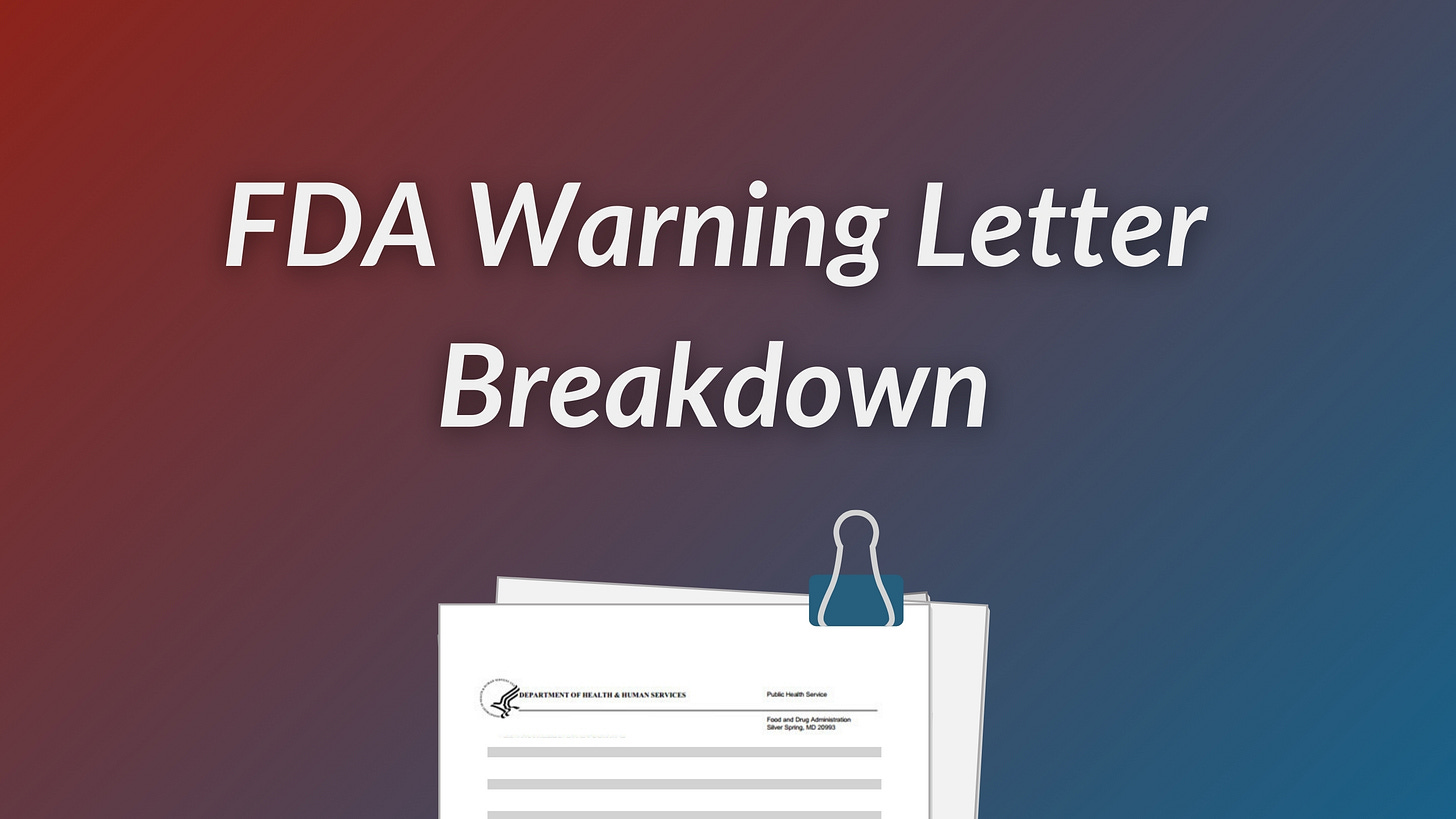Recent Warning Letters Reveal Systemic Issues Across Device Firms
Unvalidated, unverified, and unsafe: We take a look at the common patterns across the latest FDA warning letters to medical device manufacturers.
This breakdown is available for paid subscribers. Only paid subscribers get regular full access to our breakdowns and other analyses. If you’re not already a paid subscriber, you can upgrade here.
As we approach the end of 2024, a concerning pattern of quality system deficiencies has emerged across a recent batch of FDA warning letters issued to medical device manufacturers:
The deficiencies identified showcase specific technical failures and broader organizational challenges in maintaining robust quality management systems.
Let’s quickly break down the patterns we’re seeing across these three letters.
Want to stay out of our warning letter breakdowns? Contact us for audit, mock inspection, remediation, and other RA/QA support.
Design control system failures
The most pervasive violations centered on design control requirements, with specific instances demonstrating severe lapses in product development oversight:
At one facility, inspectors found a c-section pack had critical unverified components, including one classified as a "medium risk" component. The manufacturer's own Design Control Procedure required component evaluation as part of design verification and validation, yet two out of 26 components had never been verified for ethylene oxide sterilization compatibility.
Another manufacturer shipped their Class II XR-01 Portable X-ray System to the U.S. market since 2023 without any design validation documentation or risk analysis. When confronted during the inspection, they claimed that "information provided during the inspection was incomplete," yet failed to produce any evidence of existing validation procedures.
The third manufacturer demonstrated similar oversights with their Rover Mobile X-ray System, failing to validate software and panel integration. They compounded this issue by incorrectly processing design changes as manufacturing deviations, bypassing critical verification requirements for changes affecting product fit, form, and function.
CAPA system inadequacies
CAPA system failures revealed serious gaps in quality management processes:
One manufacturer's review of 19 CAPAs implemented between 2022 and 2024 showed no verification or validation to ensure effectiveness before implementation. The company had no documented evidence showing the implementation of any proposed corrective actions. When asked about CAPA verification during the inspection, they couldn't provide a single example of effectiveness evaluation.


